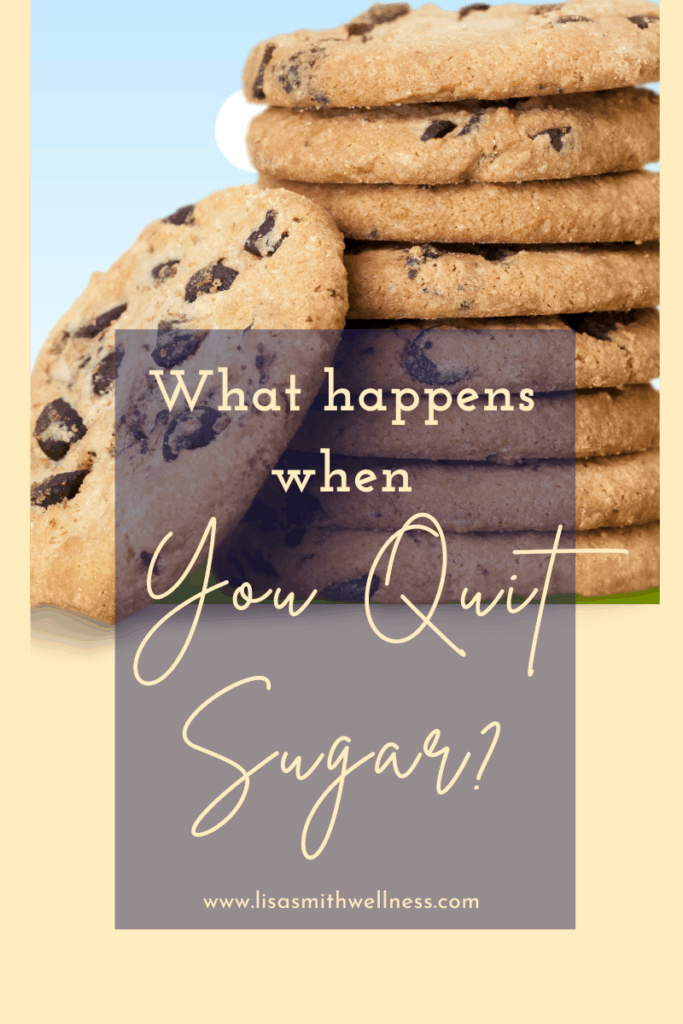You want to quit sugar but it’s that toxic ex you keep running back to: charming, addictive, and oh-so-satisfying in the moment… until you wake up bloated, cranky, and wondering why you fell for it again.
Most of us know it isn’t exactly a superfood, but the real truth is more sobering: sugar is one of the biggest drivers of inflammation, metabolic dysfunction, hormone chaos, and premature aging. It’s not just about weight gain or cavities—it’s about quiet hijacks on your body at the root level.
The good news? You can make a clean break and quit sugar for good. When you do, the payoff is huge: glowing skin, steadier moods, balanced hormones, and more energy than you’ve felt in years.
Let’s dive into what’s really happening in your body when sugar takes the wheel, why functional medicine says it’s time to call it quits, and how to find a sweeter life—without sugar running the show.

Why Sugar Is So Hard to Quit
Let’s get this out of the way: if quitting sugar feels impossible, it’s not because you’re weak. It’s because sugar is biologically addictive.
Research has shown sugar lights up the brain’s reward center in ways more intense than cocaine. Every cookie, soda, or caramel latte gives you a dopamine hit, training your brain to want more—fast. Add to that the emotional comfort sugar provides, and you’ve got the perfect storm of cravings, guilt, and dependence.
Here’s the kicker: over time, sugar hijacks your metabolism and keeps your body in survival mode. Instead of burning food for energy, you store more fat, your hormones misfire, and your gut takes a beating.
And that brings us to the heart of the issue: sugar isn’t just empty calories. It’s a root cause disruptor.
The Functional Medicine Case Against Sugar
From a functional medicine perspective, sugar is one of the biggest silent saboteurs of your health and beauty. Here’s how it shows up:
1. Hormone Havoc
Every sugar spike = an insulin surge. Over time, this rollercoaster makes your cells resistant to insulin, leaving you with blood sugar swings, stubborn belly fat, PMS, hot flashes, and even fertility issues.
High insulin also raises cortisol (your stress hormone) and disrupts thyroid function. Translation: mood swings, fatigue, and feeling “off” even when your labs look normal.
2. Metabolic Dysfunction
Metabolic dysfunction (a.k.a. metabolic syndrome) is the cluster of high blood pressure, elevated blood sugar, belly fat, and abnormal cholesterol that paves the way for diabetes and heart disease. Sugar is one of its key drivers.
And here’s the kicker—metabolic dysfunction doesn’t just affect your body. It accelerates skin aging, brain fog, and energy crashes.
3. Accelerated Aging
Sugar causes glycation, a process where sugar molecules bind to proteins in your skin (like collagen and elastin), making them stiff and prone to damage. This is literally what creates wrinkles, sagging, and dullness.
So yes—sugar shows up on your face.
4. Chronic Inflammation
Inflammation is the root of almost every chronic condition, from arthritis to Alzheimer’s. Sugar fans the flames by feeding harmful gut bacteria, spiking cortisol, and creating oxidative stress (free radical damage).
Think of inflammation as the body’s fire alarm. Sugar keeps pulling the lever.
Related Post: Sugar is Sabotaging Your Skin
The Gut–Sugar Connection (Where Beauty + Health Begin)
Your gut is ground zero for how you look, feel, and function. It houses 70% of your immune system, regulates hormones, and makes key neurotransmitters for mood and sleep.
Sugar, especially refined sugar, wreaks havoc here:
- It feeds harmful bacteria and yeast, leading to dysbiosis (imbalance).
- Dysbiosis drives bloating, leaky gut, skin breakouts, and low immunity.
- Inflammation spreads from the gut throughout the body, impacting your metabolism, skin, and even brain health.
When your gut is inflamed, your body can’t absorb nutrients well. That means even if you’re eating a “healthy diet,” you’re not getting the building blocks for glowing skin, balanced hormones, and steady energy.
The takeaway? Heal your gut, quit sugar, and you’ll heal so much more—including your relationship with sweets.
Why Artificial Sweeteners Aren’t the Answer
When you quit sugar, it’s tempting to think, “I’ll just swap sugar for Splenda and call it a day.” But here’s the problem:
- They trick your brain. Your taste buds stay hooked on sweet, making cravings harder to kill.
- They confuse your metabolism. Studies show they can spike insulin anyway, which sabotages your weight-loss efforts.
- They disrupt your gut microbiome. Artificial sweeteners damage beneficial bacteria, promoting leaky gut and worsening inflammation.
- They are neurotoxic. You heard it right, they wreck your brain health, too.
So while “diet” versions of your favorite drinks might seem like an upgrade, they’re still blocking you from healing at the root.
Pin this for Later

Sweet Swaps That Actually Help You Quit Sugar
Quitting sugar doesn’t mean you’ll never taste sweetness again. The key is choosing natural options that don’t wreak havoc on your blood sugar or gut.
Here’s the lineup:
- Monk Fruit – Plant-based, 150–200 times sweeter than sugar, with no calorie or blood sugar impact. Perfect in small amounts.
- Stevia – Natural plant extract. Look for liquid drops without additives for the cleanest taste. (Bonus: has antimicrobial properties.)
- Allulose – Rare sugar found in figs and raisins. Doesn’t spike blood sugar, easy on digestion, and tastes almost identical to sugar. Sometimes derived from corn. You may want to avoid, if you’re corn-sensitive.
- Erythritol – Great for baking; behaves like sugar in recipes. But keep portions moderate to avoid digestive drama.
- Xylitol – Supports dental health but is lethal to dogs, so handle with care.
✨ Pro tip: Rotate your sweeteners so you don’t overwhelm your taste buds with hyper-sweet signals. Over time, fruit and even veggies (yes, carrots!) will start to taste sweeter naturally.
How to Survive the Sugar Detox
Let’s not sugarcoat it (pun intended): when you quit sugar, the detox is not fun. Headaches, irritability, breakouts, and fatigue are common in the first 7–10 days. This is your brain and body recalibrating.
Here’s how to get through it with less suffering:
- Eat real food. Focus on protein, fiber, and healthy fats at every meal to keep blood sugar stable.
- Hydrate like it’s your job. Dehydration makes cravings worse. Add electrolytes if needed.
- Prioritize sleep. Lack of sleep spikes cravings and weakens willpower.
- Use adaptogens. Herbs like ashwagandha or rhodiola can help calm stress and reduce the urge to reach for sugar.
- Crowd out, don’t cut cold turkey. Swap soda for sparkling water with citrus, or candy for a few squares of dark chocolate.
After about two weeks, the magic happens: cravings quiet down, your palate resets, and suddenly strawberries taste like dessert.
What Life Looks Like After You Quit Sugar
Here’s what you can expect when you make it to the other side of the breakup:
- Glowing skin – Less inflammation = fewer breakouts, smoother texture, and more collagen preservation.
- Balanced hormones – PMS, perimenopause, and midlife symptoms ease when insulin and cortisol calm down.
- Steady energy – No more 3 p.m. crashes.
- Clearer mind – Brain fog lifts as blood sugar stabilizes.
- Youthful resilience – From mitochondria to metabolism, your body works better without constant sugar assaults.
And maybe best of all—you’ll feel empowered. Instead of sugar controlling you, you decide how you want to feel.
Final Thoughts: The Sweetest Life Is Built From the Inside Out
Quitting sugar isn’t about deprivation—it’s about liberation. It’s about choosing a body that feels light, energized, and balanced over a momentary fix that leaves you inflamed and exhausted.
From a functional medicine perspective, sugar isn’t just a bad habit. It’s a root-cause disruptor of your hormones, gut health, metabolism, and even your skin. By choosing natural sweeteners, real food, and a little patience, you’ll discover that true sweetness comes from healing at the deepest level.
So, here’s my challenge: give your body two weeks without sugar. Notice what shifts. Pay attention to your energy, your skin, your digestion, and your mood.
Chances are, you’ll never want to go back.
+ view comments . . .